The Little Match Girl Summary
"The Little Match Girl" and Hans Christian Andersen:
Hans Christian Andersen, a Danish novelist, published his short story "The Little Match Girl" for the first time in 1845. An impoverished girl is depicted in the story as she tries to sell matches on the streets on a chilly winter night. She attempts to sell matches but is unsuccessful and is frightened of going home empty-handed. She desperately strikes the matches to stay warm while experiencing mystical visions.
Sadly, the young match girl freezes to death, and this is how the story ends. A well-known and adored author of children's literature is Hans Christian Andersen. He is primarily known for writing fairy tales, which are beloved for their unique stories, colorful characters, and moral themes. His other well-known works include "The Ugly Duckling," "The Emperor's New Clothes," and "The Little Mermaid."

Significance of "The Little Match Girl" in Children's Literature:
- Children's literature has persisted for over a century, and "The Little Match Girl" is one of its classics. It has been transformed into several mediums, including film, theatre performances, and even ballets, and has been translated into several different languages.
- The story's ongoing appeal can be linked to several things, such as its emotional resonance, rich imagery, and universal themes.
- It emphasizes the plight of marginalized people, like the little match girl, who struggles to exist in a harsh world, and the story is a powerful statement on poverty and inequality.
- The story's tragic conclusion serves as a powerful reminder of the transience of life and the value of understanding and compassion for others.
- "The Little Match Girl" is a powerful example of how narrative can engage readers of all ages and arouse their emotions.
- The tale's lasting influence serves as a reminder of the capacity of literature to uplift, instruct, and amuse. It is still regarded as a beloved piece of children's literature today.
Plot Summary:
- An impoverished girl tries to sell matches on the streets on a chilly winter night in "The Little Match Girl," a short story.
- On New Year's Eve, the young match girl is frightened to go home empty-handed since her father will beat her if she doesn't sell matches.
- She seeks cover in a doorway and starts to strike her matches to generate heat. As she does so, she has enchanted images that carry her to a cozy and welcoming realm.
- The young match girl experiences images of a Christmas feast, a warm stove, and her deceased grandma, who carries her to heaven.
- Every time she strikes a match, the visions vanish, and she is once more left outside in the cold.
- The young match girl eventually perishes from exposure at the doorway, and her body is found the following morning.
Themes:
- Poverty and inequality: The narrative emphasizes the challenges of marginalized people who lack access to basic comforts like food and shelter.
- Empathy and compassion: The tale reminds us of the value of being nice and compassionate to those less fortunate than us.
- The narrative serves as a painful reminder of how short life is and how crucial it is to enjoy it to the fullest.
- Hope and imagination: The tiny match girl's dreams show the strength of hope and creativity in the face of difficulty.
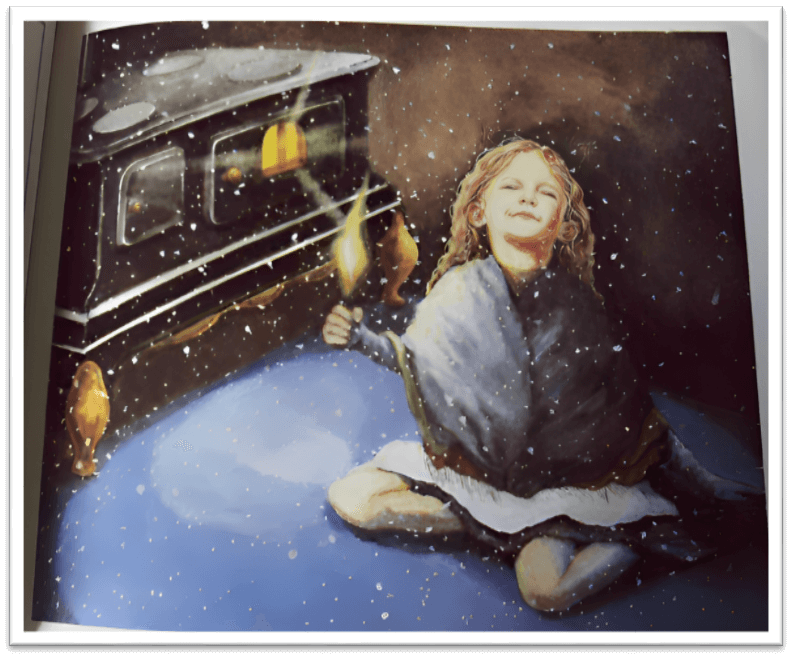
Setting and Characters in "The Little Match Girl":
1) Setting:
- During a chilly winter night in a city, the story takes place.
- To sell matches, the little match girl travels the streets.
- To protect herself from the cold, she seeks shelter in a doorway.
2) Characters:
- The little match girl: the narrative's main character. On a chilly winter night, the young girl attempts to sell matches on the streets. She hides in a doorway to stay warm, fearing going home empty-handed. She has a strong imagination and sees images when she strikes her matches.
- The little match girl's father: He is cruel and uncaring and beats the young girl when she doesn't sell any matches.
- The little match girl's grandmother transports the young girl to heaven when she appears in her dreams. She is a reassuring and kind figure who provides comfort and safety for the young match girl.
- Passersby: The tiny match girl is passed by several individuals, but none of them stop to offer assistance.
The setting and characters in "The Little Match Girl" support the narrative's themes of poverty, injustice, and the frailty of life. The dark and chilly surroundings emphasize the young match girl's sad predicament, and the characters' actions-or lack thereof-emphasize the value of empathy and compassion. Particularly, the young match girl and her grandma stand in for the consolation and hope that is sometimes absent from the lives of the oppressed and marginalized.
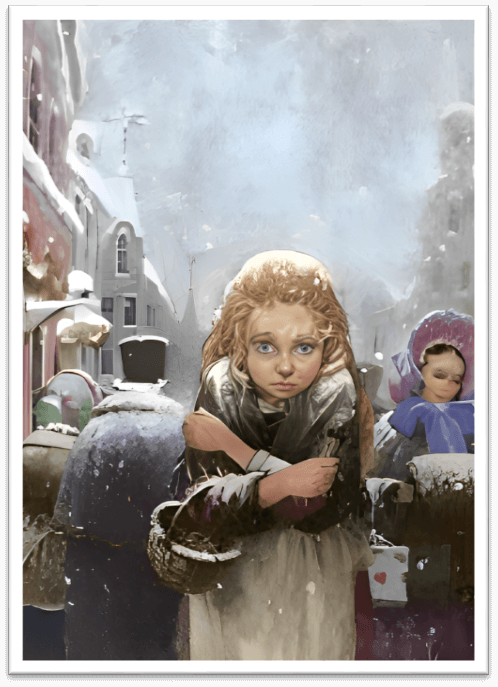
Themes and Analysis:
I. Poverty:
- The little match girl represents the many people who fight to exist in a harsh and unfair world, and poverty is a major topic in the narrative.
- The narrative emphasizes how impoverished people lack basic comforts like food, shelter, and warmth.
II. Suffering:
- The little match girl serves as the story's representation of the overarching subject of pain.
- Her father abuses her, adding to her already dire circumstances of being cold, hungry, and alone.
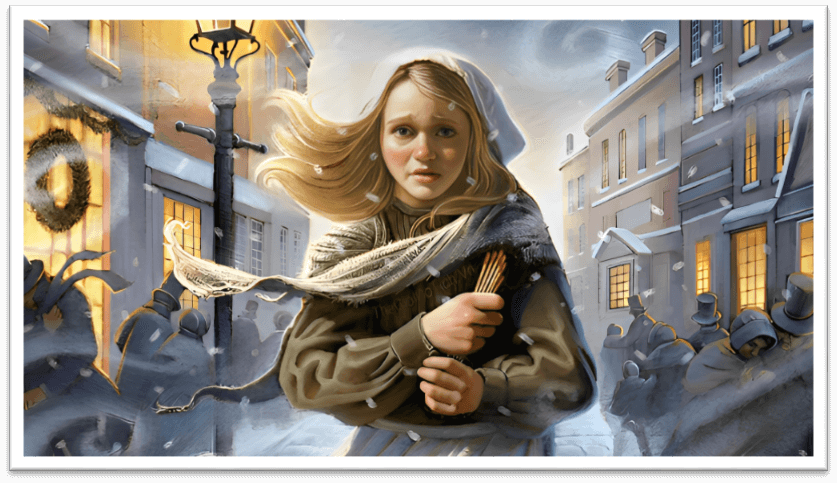
III. Compassion and Empathy:
- The little match girl's visions illustrate the story's primary themes of compassion and empathy, which are the ability of these feelings to bring comfort and solace in trying circumstances.
- The narrative serves as a reminder of the value of being nice and compassionate to those less fortunate than us.
IV. Hope:
- The little match girl's visions represent the optimism that keeps her going in the face of difficulty. Optimism is a reoccurring element in the novel.
- Her early demise brutally ends the ray of hope she offered through her dreams of warmth, comfort, and love.
V. The Fragility of Life:
- The young match girl's passing is a painful reminder of the fragile aspect of life, a major subject in the novel.
- The narrative's moral emphasizes the value of savoring every moment with our loved ones and living life to the fullest.
Overall, "The Little Match Girl" is a compelling tale exploring poverty, pain, empathy, and hope. The tale has endured over time and is still regarded as a beloved piece of children's literature, which is evidence of the ability of literature to move, instruct, and amuse.
Symbolism and Metaphor:
"The Little Match Girl" is a narrative full of metaphors and symbols that help express its themes. The following are a few noteworthy examples:
I. The Matches:
- As the only source of warmth and light in the tiny match girl's existence, matches serve as a metaphor for hope.
- The matches also symbolize the transient aspect of life, as each one stands for a passing instant.
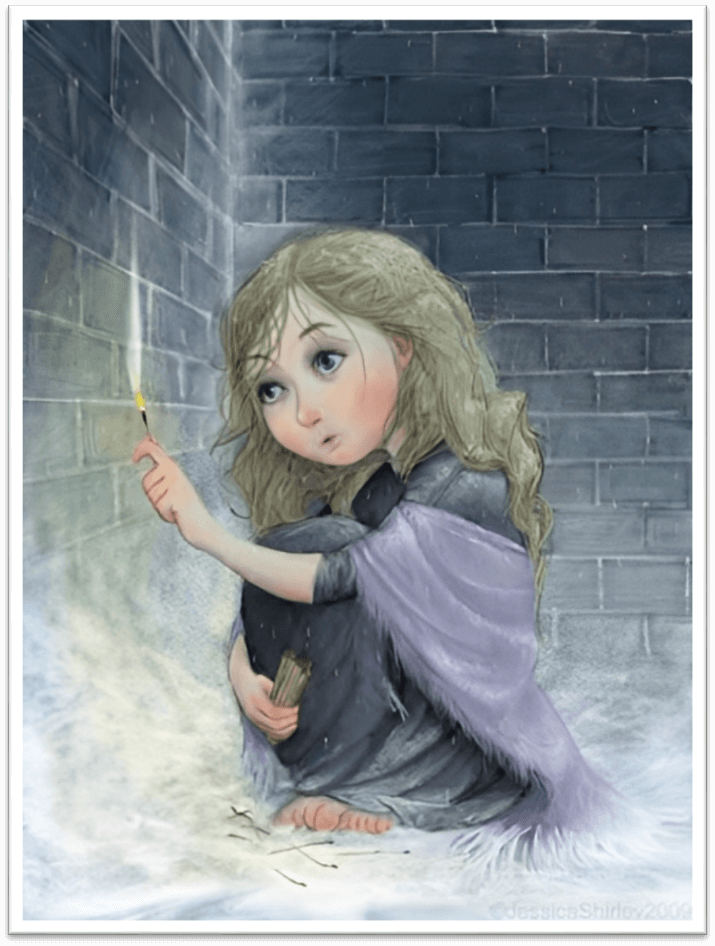
II. The Cold:
- The cold symbolizes the harsh realities of poverty and misery, which appears frequently throughout the narrative.
- Since the onlookers don't seem to care about the young match girl's distress, the cold also represents the emotional distance between individuals.
III. The Little Match Girl:
- The little match girl represents the weak and underprivileged in society, and her suffering is a symbol of their efforts.
- The tiny match girl's dreams and final demise serve as a parable for the strength of hope and the frailty of existence.
IV. The Grandmother:
- The grandmother represents warmth, solace, affection, and a source of hope and salvation for the young match girl.
- The grandmother also represents the afterlife and the desire for perpetual joy and serenity.
V. The Visions:
- The tiny match girl's visions when she ignites the matches are a metaphor for the value of hope and dreams and the strength of imagination.
- The tiny match girl's visions also represent her unmet need for warmth, comfort, and affection.
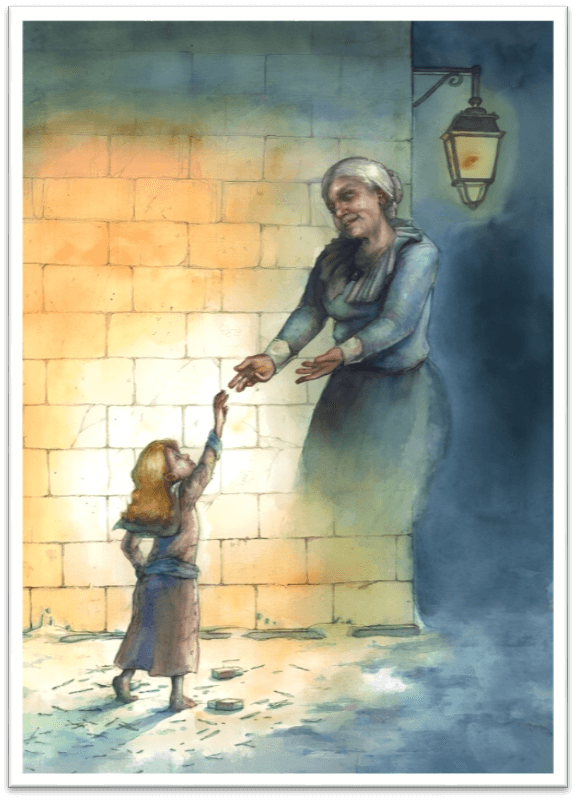
Overall, "The Little Match Girl's" use of symbolism and metaphor helps to portray the story's themes in a potent and evocative fashion, increasing the emotional effect of the piece. Using these literary techniques, the narrative transcends being merely a tale of poverty and misery and instead turns into an insightful reflection on the nature of humanity.
Narrative Structure and Point of View:
Every story must have a narrative framework, and point of view is a key component in determining the reader's comprehension and emotional reaction to the material. The narrative structure and point of view of "The Little Match Girl" are examined in the following manners:
I. Narrative Structure:
- The story of "The Little Match Girl" follows a linear pattern with different starting, middle, and finish points.
- The little match girl is introduced at the novel's start, and it concludes with her tragic demise.
- The narrative events in this novella take place over a condensed amount of time due to its modest length.
II. Point of View:
- The narrative is limited to the third person and concentrates on the viewpoint of the young match girl.
- The reader can empathize with the tiny match girl's misery by viewing the world through her perspective.
- The narrator's use of strong sensory information contributes to the reading experience's vivid and immersive quality.
III. Flashbacks and Visions:
- The narrative style of the story also includes flashbacks and visions, which show glimmers of the little match girl's past and give her hope for the future.
- These techniques give the narrative depth and complexity and help the reader comprehend the little match girl's character more thoroughly.
IV. Foreshadowing:
- Foreshadowing is another technique used in the novel to give hints throughout the story about what will happen to the little match girl.
- This strategy intensifies the story's emotional effect by generating a sense of inevitable disaster.
Overall, The Little Match Girl's narrative structure and point of view combine to produce an intensely engaging reading experience that immerses the reader in the world of the little match girl. The story's emotional effect is enhanced, and its themes of hope, pain, and the fragility of life are reinforced by flashbacks, visions, and foreshadowing in particular.
Context and Background:
Understanding the historical and cultural setting in which Hans Christian Andersen wrote "The Little Match Girl" is crucial to understanding the story. Consider the following important details:
I. Period:
- "The Little Match Girl" was written by Hans Christian Andersen in 1845, towards the middle of the 19th century.
- This was a time of considerable social and economic transformation in Europe, with rising inequality and poverty brought on by quick urbanization and industrialization.
II. Cultural Context:
- The Danish novelist Hans Christian Andersen wrote in the Romantic era, which was characterized by an emphasis on personal experience, passion, and imagination.
- He was famous for his fairy stories, which frequently explored themes of youth, innocence, and the pursuit of social justice.
- "The Little Match Girl" embodies many of the issues and preoccupations of the Romantic period, including an emphasis on the individual and a criticism of social inequities.
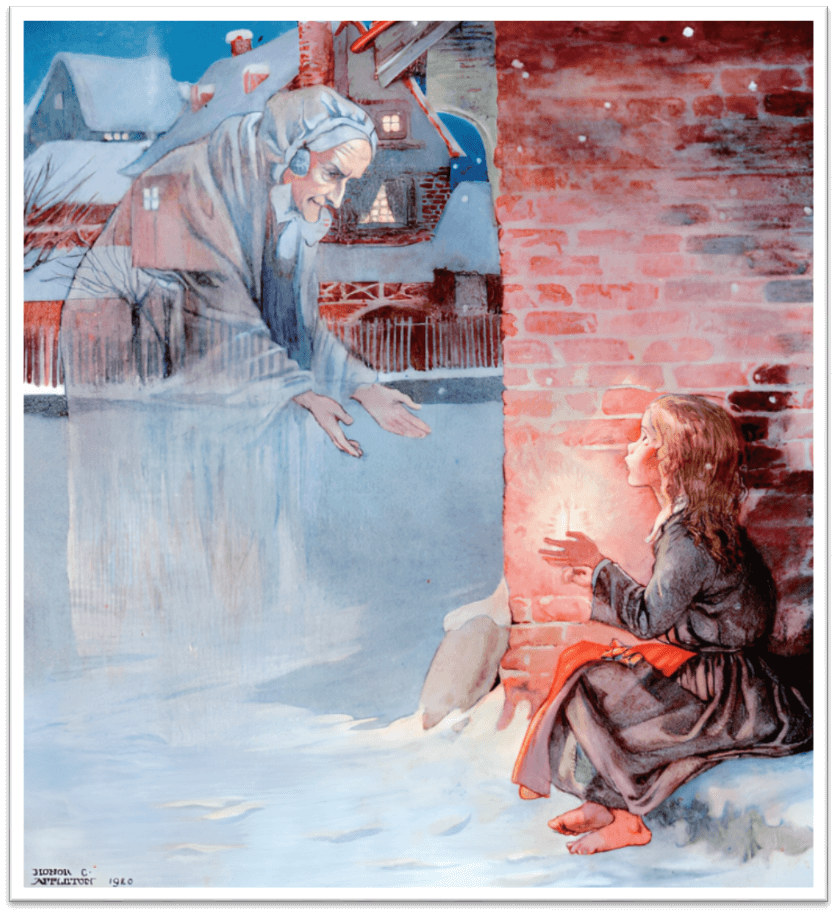
III. Social Context:
- The setting of "The Little Match Girl" is an extremely impoverished society where kids must work to survive and frequently go without food.
- This was a common reality for kids in Europe around the middle of the 19th century, especially in cities.
- The welfare of children and people experiencing poverty, a major topic in social and political debates at the time, is reflected in Andersen's novel as an increasing worry.
IV. Religious Context:
- Andersen was brought up in a deeply religious family and was affected by the Moravian Church's doctrines.
- "The Little Match Girl" explores various Christian themes, such as the notion that adversity can lead to salvation and the prospect of life after death.
Overall, comprehending the cultural and historical setting in which "The Little Match Girl" was created aids in illuminating its themes and meanings. We can observe how the story represents the issues and beliefs of its period and still resonates with readers now by setting it within its larger social, cultural, and religious context.
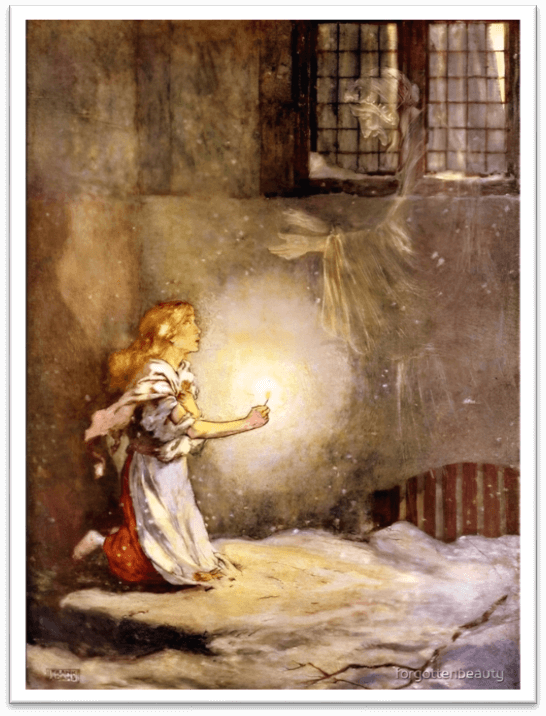
Social and Political Issues:
Many social and political issues of the day, especially those involving poverty, child labor, and injustice, are reflected in the story "The Little Match Girl." Here are some examples of how the story addresses these issues:
I. Child Labor:
- A young match girl is a young person who must work to survive. Despite being unwell and lacking adequate clothing, she is out in the cold, selling matches on New Year's Eve.
- The narrative illustrated the heinous realities of child labor in the middle of the 19th century when numerous kids were made to toil long hours in hazardous and unhealthy settings.
II. Poverty:
- The story's main theme is poverty. The young match girl and her grandmother are quite underprivileged and have difficulty making ends meet.
- The narrative paints a picture of a society where people must beg and scrounge for sustenance due to their great poverty and despair.
III. Inequality:
- In addition, "The Little Match Girl" captures the increasing consciousness of social and economic injustice in the middle of the 19th century.
- The small match girl in the narrative is depicted as starkly contrasting to the wealthy and affluent people around her, especially the exquisite partygoers she sees through the windows.
IV. Social Responsibility:
- Andersen was strongly concerned about social justice and felt it was the privileged class's duty to support the underprivileged.
- This issue is addressed in "The Little Match Girl," which urges readers to sympathize with the little match girl's plight and acknowledge their moral duty to assist needy people.
In general, "The Little Match Girl" is a story that addresses some of the most important social and political issues of its time. It brings to light the harsh realities of poverty and child labor and emphasizes the rise in social and economic inequality throughout the middle of the 19th century. The tale also illustrates Andersen's moral conviction that we must care for the less fortunate and inspires readers to consider their social responsibility.
Adaptations and Interpretations:
Throughout popular culture, "The Little Match Girl" has been adapted and interpreted in various ways, including in movies, plays, and musicals. Following are some unique adaptations:
I. Films:
- In addition to a silent film made in 1928 and an animated short produced by Walt Disney in 2006, "The Little Match Girl" has been turned into several other motion pictures.
- The 1928 silent film adaptation, directed by Jean Renoir, won plaudits for using impressionist methods to produce a surreal environment.
II. Plays:
- Additionally, "The Little Match Girl" has been transformed into various stage plays, including a ballet by the Royal Danish Ballet and an opera by the Hungarian composer Gy�rgy Ligeti.
- The British theatre company Kneehigh created a stage version of the narrative with puppetry, music, and dance in 2013.
III. Musicals:
- The composer and lyricist Frank Loesser produced "The Little Match Girl" into musical multiple times, including an Off-Broadway performance in 1982.
- Jazz and classical music were combined into Helge Burggrabe's 2006 musical rendition of the tale. Burggrabe is a German pianist and composer.
IV. Literary Adaptations:
- The Little Match Girl has also been the subject of several literary adaptations and retellings, such as Gregory Maguire's "Matchless: A Christmas Story," which recasts the tale as a contemporary fable.
V. Popular Culture:
- From the 1980s anime series "Little Nemo: Adventures in Slumberland" through the 2016 Christmas special of the BBC television series "Sherlock," "The Little Match Girl" has also been mentioned or hinted at in popular culture.
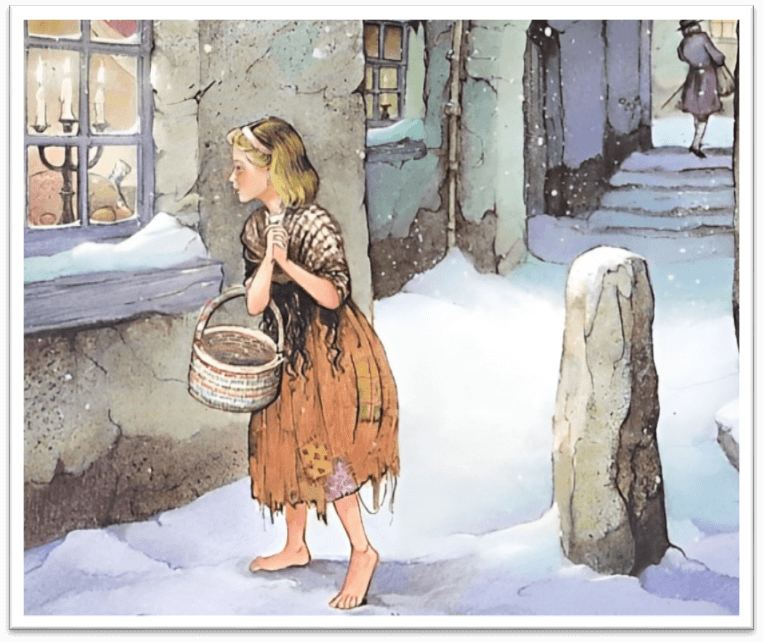
Overall, "The Little Match Girl" has seen numerous adaptations and reinterpretations in popular culture, demonstrating Andersen's ageless tale's continuing strength and allure. These changes have enabled new audiences to connect with the narrative and discover new significance and relevance in its themes and ideas.
Conclusion:
In conclusion, Hans Christian Andersen's "The Little Match Girl" is a classic and extraordinarily poignant tale that has captivated and inspired readers worldwide for centuries. The story tackles themes of poverty, suffering, hope, and the strength of empathy and compassion through its vivid descriptions, potent imagery, symbolism, and metaphor. It serves as a reminder of the value of showing kindness and compassion to others, especially those less fortunate or socially marginalized.
|









 For Videos Join Our Youtube Channel: Join Now
For Videos Join Our Youtube Channel: Join Now









